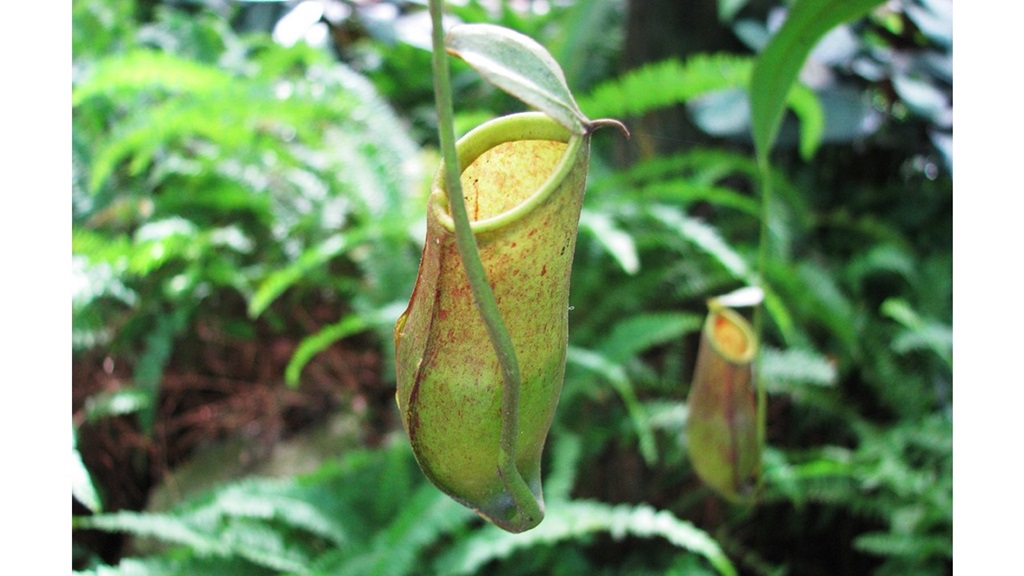.
The Pitcher Plant
The insect dances on a pitcher plant
drinking deep the fabled honey nectar.
The rim affords a place to lean and slant—
heedless treads the doomed fructose collector.
Advancing where the juice is still more sweet,
excess brings him to his tragic blunder:
ignoring slippage neath his last two feet,
sweetness bitter slowly pulls him under.
He clutches vainly for a purchase point,
prison gates slide locked in this elixir—
then acid built up in his flailing joints—
hope expired there in nature’s mixer.
And as he sank this thought on him impressed:
“The one who lives to drink will drink digest.”
.
.
Parenting
A hiker went into the woods one day
to find what links the passages of time.
Mid branches deep with green, he saw a ray
illume a trunk of massive fallen pine.
The hollow of the trunk had shielded there
a ring of moss, decaying cedar bark:
a fit environment for plants most rare—
the outer wood compared to this was stark.
Within a clutch of supple violets grew
untouched by flood or freeze or falling trees—
the cedar monster had to die, he knew,
before the possibility of these.
And thus, the hiker found the sign he sought:
When giants fall, the sapling’s life is bought.
.
.
Andrew Yeager is a Lutheran pastor who lives in Decatur, Indiana.















Both poems flow beautifully and contain excellent words and rhymes, such as “honey nectar and fructose collector” and “elixir and mixer.”
What a unique choice of the pitcher plant – well executed.
Plus a philosophical hike!
Thanks for two fine reads, Andrew.
I really like both of these sonnets, Andrew. Your imagery is done very well, giving an immediately clear picture of what’s happening. The last line of “The Pitcher Plant” is wonderful, and made me smile. “Parenting” is an intriguing title, because as I read the poem I’d forgotten it, until it was explained in the last line. But although it seemed like a surprise ending, there was plenty of foreshadowing!
Somewhat dark yet homorous (if you have that kind of humor) nature sonnets. Why does nature consume itself to stay alive? Is it an essential part of life, or is it unnecessary?
Your poem reminds me of a sonnet I wrote called “The Law of the Jungle.”
Have you heard of Eduard Mörike? He was a German Lutheran pastor of the 19th century. I recently translated a nature sonnet of his, and it might be on this site next month.
Thanks for the change of pace brought with these poems.
Two very nice nature sonnets. In “Parenting”, I love the juxtaposition of the delicate violets taking root in the dead trunk of the massive pine tree. I’ve long been fascinated by carnivorous plants such the fly trap, so I love your pitcher plant poem as well.
Yes, both poems have a lovely flow and
are educational and thought provoking.
Both poems are very enjoyable and the photo is really nice too, thank you.
I love seeing fellow Hoosiers’ poetry appear here.
Pitcher plants have always fascinated me, and I was delighted to see another poet tackle the subject matter. “Parenting” was interesting title for a very sensory poem. Both works are didactic, yet also present narratives with evocative imagery throughout. Thank you for sharing.